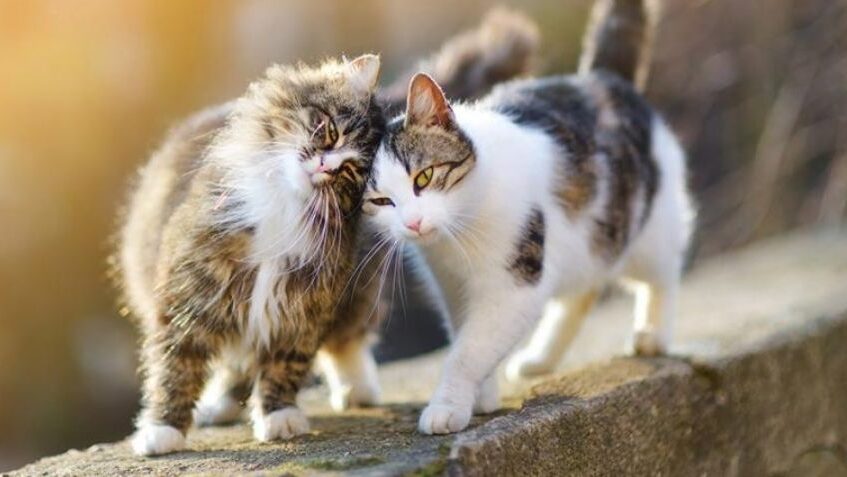CAT’S SENSES
The sensory organs of cats allow them to hunt, jump and climb, enabling cats to survive. Knowing how to protect your cat’s sensory organs will help keep your cat healthy and happy.
SENSE OF SIGHT

Cats are generally nocturnal in habit.
The retina of the cat’s eye is made extra sensitive to light by a layer of guanine, which causes the eye to shine at night in a strong light. The eyes themselves, large with pupils that expand or contract to mere slits according to the density of light, do not distinguish colors clearly.
Cats have a third eyelid, or nictitating membrane commonly called the haw. Its appearance is used frequently as an indicator of the cat’s general state of health.
A cat’s visual acuity is anywhere from 20/100 to 20/200, which means a cat has to be at 6 meters to see what an average human can see at 20 or 30 meters. Cats seem to be nearsighted, which means they cannot see far objects as well. The ability to see close objects would be well-suited for hunting and capturing prey.
SENSE OF SMELL

The cat’s sense of smell, particularly well developed in the adult, is crucial to its valuation of food, so that a cat whose nasal passages become clogged as a result of illness may appear to lose its appetite completely. Cats can distinguish the odor of nitrogenous substances (e.g., fish) especially keenly.
SENSE OF TOUCH

The sense of touch is acute in cats. The eyebrows, whiskers, hairs of the cheek, and fine tufts of hair on the ears are all extremely sensitive to vibratory stimulation. The functions of the whiskers (vibrissae) are only partially understood; however, it is known that, if they are cut off, the cat is temporarily incapacitated. The toes and paws, as well as the tip of the nose, are also very sensitive to touch.
SENSE OF HEARING

Cats also have an acute sense of hearing. Their ears contain almost 30 muscles (compared with 6 in humans); as a result, they can turn them many times more quickly in the direction of a sound than can a dog. The ears of cats are receptive to ultrasonic frequencies up to 85,000 vibrations per second, greatly exceeding the hearing capabilities of dogs, which register 35,000 vibrations per second.
SENSE OF TASTE

The tongue of all cats, which has a patch of sharp, backward-directed spines called filiform papillae near the tip, has the appearance and feel of a coarse file; the spines help the cat to groom itself. The disposition to cleanliness is well established in cats, and they groom themselves at length, especially after meals.
Despite having fewer taste buds than other animals, cats seem to be able to taste sour, bitter, salty, and umami flavors well enough. This is likely due, in part, to the cat’s highly acute sense of smell.
You may also visit – https://www.facebook.com/angkopparasahayop




